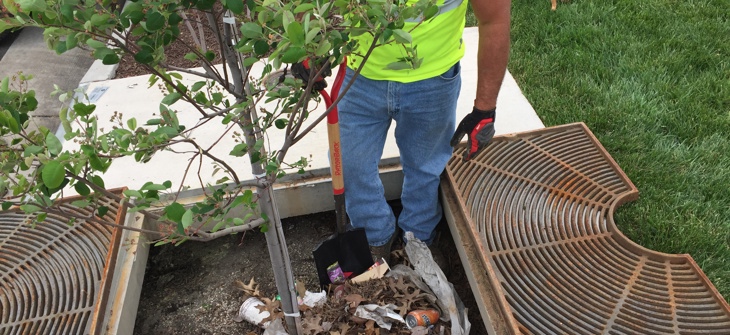
Critical Elements for Implementing a Defensible BMP Maintenance Policy
Key Considerations for Implementing a Strong BMP Maintenance Policy
Oil changes. Gutter cleaning. Annual doctor appointments. These are all forms of maintenance that most people would likely agree are necessary to keep our vehicles, our homes, and our bodies in good working order. We may not like spending the time, money, and effort on these tasks, but we do them anyway.
If you happen to own a stormwater best management practice (BMP), then you also know all too well that periodic maintenance is necessary to keep the BMP operating correctly. Yet, BMP maintenance is often deferred or ignored altogether for reasons ranging from not knowing of a practice’s existence to a lack of funds necessary to perform maintenance or to being unfamiliar with the maintenance process in the first place, among others. Limited enforcement of maintenance requirements at the municipal level is also a factor that can contribute to underperforming BMPs.
If you are lucky enough to be a permitted Phase I or Phase II Municipal Separate Storm Sewer System (MS4), you get the pleasure of not only ensuring public BMPs are maintained, but also have the responsibility to require maintenance of BMPs under private ownership. I know from my own experience as a stormwater program manager just how daunting that undertaking can feel. It is a task made more difficult in this era of limited financial and personnel resources and ever-increasing infrastructure needs. Ultimately, establishing policies and procedures that mandate proper operation and maintenance (O&M) of all BMPs is not only appropriate but also in a permittee’s best long-term compliance interests.
Common pollutants found in stormwater runoff include sediment, trash, oils and grease, pesticides, excess nutrients, heavy metals, and bacteria. In urbanizing watersheds, runoff from highly impervious areas carries these pollutants to local streams or rivers causing degradation to water quality. Structural BMPs are used to intercept those pollutants before they reach local waterways. The amount of pollutants retained within the BMP has a significant effect on the amount of O&M required. Routine maintenance allows for the system to operate at its best and meet performance expectations while deferring or forgoing maintenance can lead to the need for additional repairs or replacement. In situations where a BMP has fallen into a state of complete disrepair, the cost of full replacement can be significantly more expensive than routine maintenance expenses.
Stormwater managers should consider the following when seeking to implement a robust O&M compliance program:
- Ensure post-construction BMP maintenance language is integrated into local ordinances and permits. A common approach is to include BMP design and operation and maintenance requirements in a separate manual and incorporate it by reference in an ordinance.
- Require the project owner record a post-construction stormwater BMP maintenance agreement addressing onsite stormwater controls ensuring performance expectations are met in perpetuity. The maintenance agreement must allow the permittee, or designee, to conduct site inspections, perform necessary corrective actions, and recoup the cost of such actions if the site owner doesn’t comply within a specified time period. The agreement should also account for future property transfers or changes in leases.
- Maintain an inventory of existing and future BMPs to help owner BMP owners accountable for long-term maintenance. If able, employ a geographical information system (GIS) tool to help track projects, capture maintenance and inspection records, and log enforcement history.
- Establish a minimum frequency of BMP inspections by the permittee for all public and private facilities, e.g., once every three (3) to five (5) years.
- Verify all BMPs are constructed as designed by requiring as-built drawings prior to project closeout and ensure all construction documents, inspection records, and enforcement actions are available for the public to review.
- Create a robust O&M education program for local government staff and the community at large.
Forgoing BMP maintenance is unacceptable and places local water quality at risk. Stormwater program managers should establish clear expectations regarding O&M early in the project planning process and follow-up with strong post-construction policies and procedures to ensure compliance. Understanding that all BMPs require maintenance once constructed and incorporating the recommendations discussed herein will pay off through better functioning BMPs and a healthier environment.
